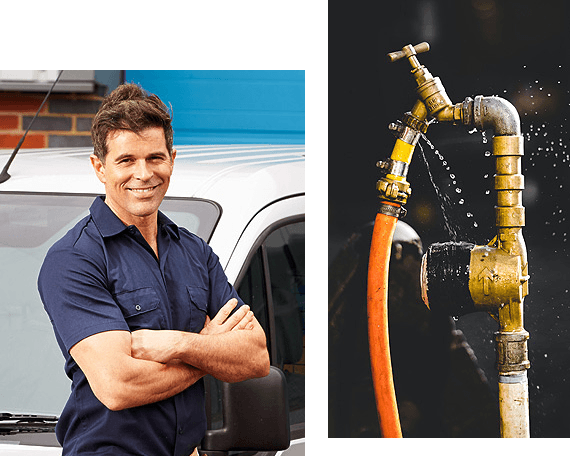Contact EZ Plumbing USA for superior
plumbing solutions!!
Standard EZ Membership
$100/year- Priority scheduling for plumbing needs
- 10% discount on every service
- Free annual plumbing system check-up
- Reliable and cost-effective service for loyal customers
Friends & Family EZ Membership
$150/year- Priority scheduling for you and referrals
- 10% discount for you and your referrals
- Unlimited referrals with perks
- Free annual plumbing check-up
- Encourage loyalty and grow the EZ Plumbing community with shared benefits

Expert Residential Plumbers To Handle Installation & Repair Of All Makes & Models
An emergency plumber in San Diego can help if you need any assistance. They are ready to act quickly and effectively. Our expert plumbers fix water heaters. Homeowners who search for a plumber near me can rely on Plumbing USA to service water heaters of any size.
Unexpected leaks and problems with the water heater? Plumbing problems can be very inconvenient. But relax, we have got your back!! Our skilled plumbers are at your disposal. We provide prompt, reasonably priced solutions for your residential plumbing requirements.
Trusted Experts for Timely and Emergency Plumbing Services
- Quality Plumbing Services 24*7
Whether day or night, you deserve high-quality plumbing services at affordable rates. From complex repairs to complete installation, you will get quick solutions when needed.
- Experienced & Licensed
EZ Plumbing USA is one of the most experienced and licensed companies, so you can expect effective solutions that fit your budget. Our team can handle all the plumbing needs that are a huge headache for you.
- Wide Array Of Plumbing Services
If you are looking for regular maintenance, complex repairs, drain cleaning, or major installation and replacement, you can count on us. We manage all plumbing codes & the latest tools.
- Flexible & Customer-Oriented
We do it right the first time. Our complete focus is on your requirements and budget to provide a positive customer experience. We are on your side to serve you hassle-free services.

Testimonials

Hire the best plumbing services that provide the best services with advanced technologies and a full Guarantee.
ADDITIONAL SERVICES PROVIDED BY EZ PLUMBING USA
Having a Slab Leak ?
It's time to act quickly!Immediate slab leak repair from EZ Plumbing can save the foundation of your house and help you avoid expensive water destruction.
Avoid Water Damage
Call us for prompt and efficient slab leak detection to avoid having water damage ruin your day.
Having Plumbing Issues?
Relax; we'll handle it! We are your dependable and quick fix. We are here to provide an emergency plumber in San Diego. Are Clogged Drains Bothering You? Our commercial plumbers are here to unclog them fast. Call EZ Plumbing for prompt and effective drain cleaning services.
Water Heater on Demand
No more cold showers. Call EZ Plumbing for your water heater repair now!
Reliable Plumbing Services Offered by Our Skilled Technicians
FAQS
Latest Blogs
Our Location
Our Location
10320s Camino Santa Fe Unit E,
San Diego, CA 92121
(760) 389 9117
22365 El Toro Rd Suite 340,
Lake Forest, CA 92630
(949) 390-6114
41109 Golden Gate Circle,
Murrieta, CA 92562
(951) 644-2211

We Bill Insurance Directly


















.png&w=128&q=75)




